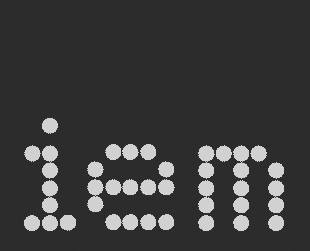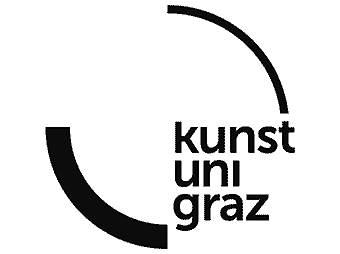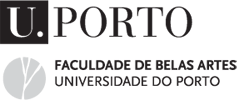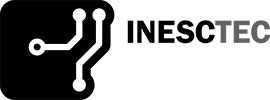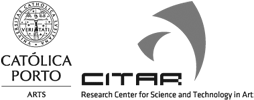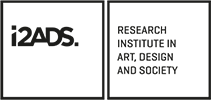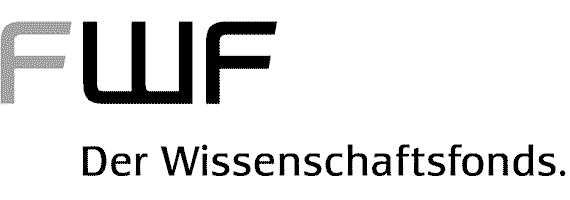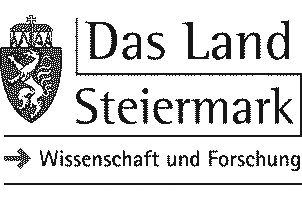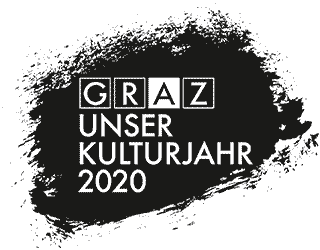
Current
Provides Ng, Eli Joteva, Ya nzi
Current is a speculation on the future of broadcasting cinema. It emerges from the intersection of contemporary trends in live streaming culture, volumetric cinema, AI deep fakes and personalized narratives. The film Current is an experiential example of what this cinema might look and feel like within a few years based on the convergence of these trends. Artificial intelligence increasingly molds the clay of the cinematic image, optimizing its vocabulary to project information in a more dynamic space, embedding data in visuals, and directing a new way of seeing: from planar to global, flat to volumetric, personal to planetary.

Environment Built for Absence (an Unofficial/Artificial Sequel to J.G. Ballard’s “High Rise”)
Tivon Rice
This video installation creatively imagines how we relate to urban landscapes and histories through the mediating agency of new technologies. How do we see, feel, imagine, and talk about the city in this post-digital era, when there are indeed non-human/machine agents similarly trained to perceive urban spaces? This project explores these questions, as well as emerging relationships with drone/computer vision and A.I.

Spectral Choreography #2
Nimrod Astarhan, Yanai Toister
Abstraction always required a medium to emerge in and from. Spectral Choreography pronounces the exhibition space as that medium: an active membrane through which information flows, occasionally yielding discernibility, then flowing on. Cocooning physical conditions, electromagnetic radiation and viewers, this active membrane makes observation part of a process of constant adaptation, a practice involving the human-body as a whole, but none of its senses.

Beyond the Canvas/Bliss
Tonio Mundry
In the present day, technology influences human perception and therefore our reality. Beyond the Canvas-Bliss deals with the question of how the classical categories of visual art deal with technological progress and the associated changes in perception. Do classic art forms such as painting, photography and sculpture already belong to the past, and if so, doesn’t it make these art form superfluous? In Beyond the Canvas-Bliss, digital technology is combined with analogue painting and the supposed boundaries between the analogue and digital world are dissolved by the empirical perception of the viewer. The experience of entering a work of art and moving about in it is intended to evoke a new perception of reality.

What the Robot Saw
Amy Alexander
What the Robot Saw is a continuously generated livestream and archive. The Robot depicts people and scenes it encounters online in an imagined cinematography style — as its computer vision and AI algorithms obsessively perceive them. Video clips within the stream are selected from among the least-viewed and least-subscribed videos on YouTube within the past several hours. People framed in closeup are identified in lower-third text with Amazon Rekognition’s analysis of their mood, gender, and age – ironically simplistic consumer identifiers. The streamed film reveals content normally only seen by robots and more broadly responds to processes of performance and representation in the increasingly blended online and offline culture.

Convoluted Alterity
Andrés Villa Torres
Convoluted alterity is an exploration of sameness using self-portraits retrieved from anonymous accounts from the online dating network Tinder. The pictures are scraped with algorithms through the API. An ML model is trained using the retrieved set of images and their color-labeled pairs, aiming to extract human skin regions. The model generates multiple depictions resembling features from the training dataset. The result is a series of still portraits and a generative morphing depiction of an artificial alterity.

Gestures #2 - #4
Ian Heisters
Gestures #2 - #4 is a triptych of algorithmically-composed dance films that research the encoding and decoding of progress, history, and memory in the body. The performers’ personal memories provide source material for dozens of performances of three simple gestures, each an investigation of the physical imprint of progress and history on a personal relationship. Algorithms endlessly sift through recordings of the performances, disarranging the roles of encoder and decoder between the performers, computer, and the viewer. Gestures #2 - #4 comprises a “nostalgic technology,” longing for an alternate history in which technology expands the possibilities of human intimacy.

TransparentPerceptron: Visualizing the Perceptron’s decision iterations
Marco Heleno, Miguel Carvalhais, Nuno Correia
As Multi-layered Perceptrons deepen, the number of their layers increases, as can the number of Perceptrons per layer. This rises the number of decision iterations developing an iterative complexity in the decision-making process of these systems, thus turning them into black boxes. Although the scientific community has been designing illustrations of the inner workings of Multi-layered Perceptrons, we find that these lack explainability and connection with the non-scientific community. Considering these illustrations, the opacity of the decision-making and the omnipresence of these systems, we developed an algorithmic data-driven visualization of a Perceptron to display its decision iterations to non-specialist observers.

Coded Archetypes (New York, Bern, Beijng)
Christian Herren
Coded Archetypes (New York, Bern, Beijng) shines a light on aspects of today’s mass graphic reproduction that are almost unknown to the general public. At the same time, it’s aim is to explore the history, and subsequently the contemporary possibilities of woodcut techniques. As part of a crackdown on crime following the terrorist attacks of 11 September 2001 almost every copier prints a nearly invisible pattern of yellow dots known as a machine identification code on every sheet. Christian Herren used these codes, which can still be found on almost all printouts from conventional laser printers, as a starting point for the Coded Archetypes series.

Kauschlauch Modulations
Christian Faubel
A chewing tube whose vibrations are picked up and amplified by contact microphones. Motors that bounce on the tube and make it vibrate rhythmically. Network electronics that make the motors vibrate. Motors that vary the conductivity of the network connections. Rhythms that lock onto each other, minimal polyrhythms, continuous drift, rest, constant movement, no standstill. For the installation of Kauschlauch Modulations I developed motorized systems, which gradually adjust potentiometers with very slow speed. These potentiometers are part of a network of coupled oscillators and cause the oscillations to be inhibited and to pause for longer periods of time.

Pythia Consulting: Asking Difficult Questions While on Hold
Mathew Mosher
Pythia appears as an old-fashioned touch-tone telephone. Instead of hearing a dial tone when the receiver is picked up, participants are immediately greeted with a voice menu system. The phone is a direct line to some artificial intelligence consulting services. Through navigating the menu system, and being placed on hold numerous times, the nature of the machine and the user are revealed. Bits and pieces of each participant’s conversation with Pythia are recorded and incorporated into the next user’s experience. The system questions contemporary interpersonal communication and support services.

Soundings
Alan Dunning
Soundings is a work exploring ideas about an unheard and hidden world using pattern and voice recognition to tease sounds from empty and silent or noisy ambient audio environments. Originally intended as a site-specific work located in Graz, Austria it has been reworked to accommodate the restrictions imposed by the Covid-19 pandemic and takes place on the artist’s property. Bespoke speech recognition software analyses audio gathered by high gain signal chains and generates strings of texts that resemble a speaking in tongues or automatic writing. The resulting texts suggest the possibility of a world delineated by unheard voices and perceptual constructions.

On a Scroll Through the Cloud
Pedro Ferreira
What lies behind the Cloud? The imagined atmosphere of the Cloud and the material bodies that compose cloud computing and the internet become the environment of a computer game. Data centres and farms come together with popular imaginaries of the internet in a fragmented environment saturated with clouds where feedback loops are generated in realtime: an open system without beginning or end. Within the cloud environment the player explores clusters of different material components and the broader cultural context of the internet.

ComComComCom: Computation, Communication, Commerce, Community, a Common Com
André Rangel
This automated light installation arises from the necessity to empower a critical reflection about an actual communications multinational company. This artwork was conceived and materialized to synthesize a critical and satirical view towards misconceptions and permeability between the concepts of communication, commerce, computation and community that int the post-digital contemporaneity can easily be transmuted into each other. This automated light installation highlights that more than the common prefix "com" between the above four words it’s the transmutation of their meanings, contexts and functions that we must be aware of.

Data Self-Portrait
Catarina Sampaio, Luísa Ribas, Pedro Ângelo
Data Self-Portrait aims to explore the creative possibilities associated with the concept of data portrait and its potential for expressing personal identity. It consists of an installation that explores the visualization of personal data pertaining to the subject's daily activities, automatically captured by digital technologies of everyday use. The project is the result of an ongoing research that seeks to frame these visualizations as representations of personal identity that reflect one’s behavioral patterns as tools for self-analysis via self-tracking. It seeks to promote discussion on the role of data portraits as a means of attaining human agency over personal data.

Hey!
Dragica Kahlina
Hey! is a game installation, a game that is designed to be played in public spaces. Hey! is part of an ongoing group research project examining questions related to game design, interaction, generative systems, music, graphical representation and social implications. Its interface is designed to be non-threatening and robust. The goal of the player is to “build” an AI by “feeding” the game emotions until it recognizes itself as an entity and with hey! The game communicates through graphics, that is ideally surrounding the player and generative sound. The game also automatically collects research data when it is played.

The In Rust We Trust Project: technological and cultural aspects of terrestrial experiments on a Martian clay simulant
Marta Flisykowska
In the context of the speculated ideas related to the settlement and colonization of Mars (Moscher 2018), can printing the first cup made of Martian clay be a symbol of a new, interplanetary, chapter of our common human history? Technology and culture are not separate from one another, but together, they redefine our surroundings. In Rust We Trust contains a set of Martian pottery 3D printed in the MGS-1 material, otherwise known as Mars Global Simulant: the first mineralogically precise simulant of Martian regolith (Cannon et al. 2019). The project combines issues related to digital production, digital aesthetics, innovative material experiments and multicultural communication.

Artist and Machine: An Iterative Art Performance
Susie Fu
Artist and Machine is a performance series that studies the entangled relationship between human and machine labor. In each performance, the audience witnesses an Artist and a Machine draw live portraits of their viewers. Using a webcam and neural networks, the Machine has "learned" to draw like the Artist and tries to improve for every new performance. The series examines themes of authorship, continuous progress, dependence, collaboration, and intimacy. Artist and Machine also spotlights the duality of our behavior towards the human versus the non-human, unexpectedly revealing the audience themselves as the real performers.




















